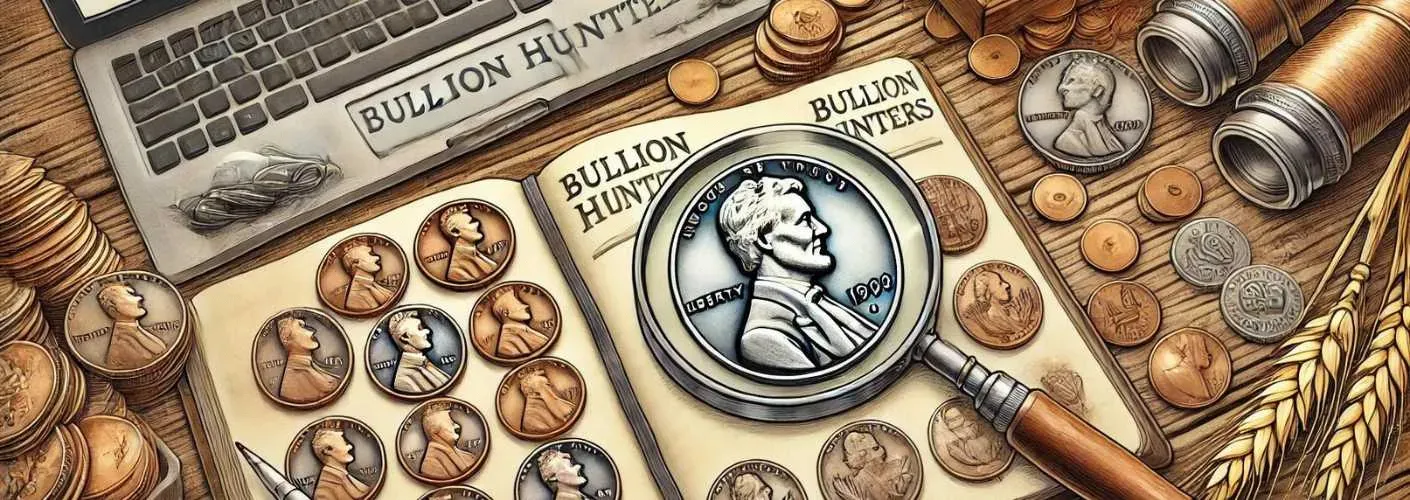
Introduction
Collecting vintage coins is a captivating hobby that combines history, artistry, and the thrill of the hunt. Among the various collectibles, Wheat Pennies hold a special place in the hearts of numismatists. This guide will delve into the fascinating world of Wheat Pennies, offering insights into their history, value, and tips for building a remarkable collection. Whether you're a seasoned collector or a novice eager to explore, Bullion Hunters is your trusted resource for connecting you with the best coin dealers and information.
History of Wheat Pennies
Wheat Pennies (Lincoln Wheat Cents) were minted from 1909 to 1958. Designed by Victor David Brenner, these pennies feature the iconic portrait of President Abraham Lincoln on the obverse and two wheat stalks on the reverse. The introduction of the Lincoln Cent marked the centennial of Lincoln's birth and was the first U.S. coin to depict an actual person.
Key Dates and Rarities
1909-S VDB: One of the most sought-after Wheat Pennies, this coin was minted in San Francisco and features Brenner's initials (VDB) on the reverse. Only 484,000 were produced, making it a key date for collectors.
1914-D: Another rarity, this penny was minted in Denver and has a low mintage of 1,193,000. Its scarcity and demand make it a valuable addition to any collection.
1922 No D: Due to a die error, some 1922 pennies were minted without the "D" mint mark, leading to high desirability among collectors.
1955 Doubled Die: This penny features a significant die error resulting in a doubled image, particularly noticeable on the date and lettering. It's a must-have for error coin enthusiasts.
Factors Affecting Value
Several factors influence the value of Wheat Pennies:
- Condition: Coins in mint or uncirculated condition command higher prices. Look for coins with minimal wear and clear details.
- Rarity: Limited mintage and unique errors increase a coin's value.
- Historical Significance: Coins from significant years or with unique backstories tend to be more valuable.
- Demand: The popularity of certain dates and varieties among collectors can drive up prices.
Tips for Collecting Wheat Pennies
- Start with Common Dates: Build your collection with more readily available Wheat Pennies before investing in rare and expensive pieces.
- Learn to Grade Coins: Understanding coin grading helps in accurately assessing a coin's condition and value.
- Join Numismatic Communities: Engage with other collectors and experts through forums, clubs, and social media groups to share knowledge and experiences.
- Buy from Reputable Sources: Ensure the authenticity and quality of your purchases by connecting with trusted dealers.
Connecting with the Right Resources
Bullion Hunters is dedicated to helping you find the best resources for your coin-collecting journey. We connect you with reputable dealers, informative articles, and vibrant collector communities. Our goal is to provide you with the tools and connections you need to build a valuable and satisfying collection.
Conclusion
Collecting Wheat Pennies is more than just a hobby; it's a journey through American history and an exploration of numismatic artistry. With the right knowledge, resources, and a bit of luck, you can build a collection that not only holds significant value but also brings immense personal satisfaction. Trust Bullion Hunters to guide you and connect you with the best in the field.
Ready to start or expand your Wheat Penny collection? Visit Bullion Hunters today to connect with reputable dealers and discover a wealth of information and resources. Sign up for our newsletter to stay updated on the latest trends, special offers, and expert insights into the world of numismatics.
Related reading you may find interesting:
The Last U.S. Penny: A Historic Farewell to America’s One-Cent Coin
